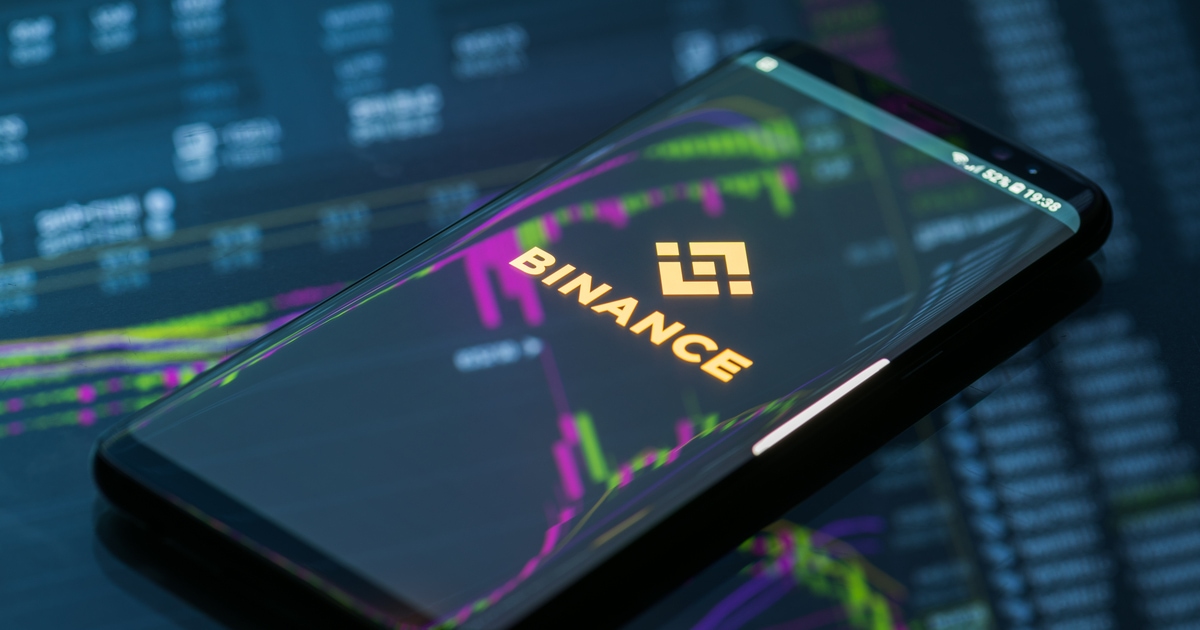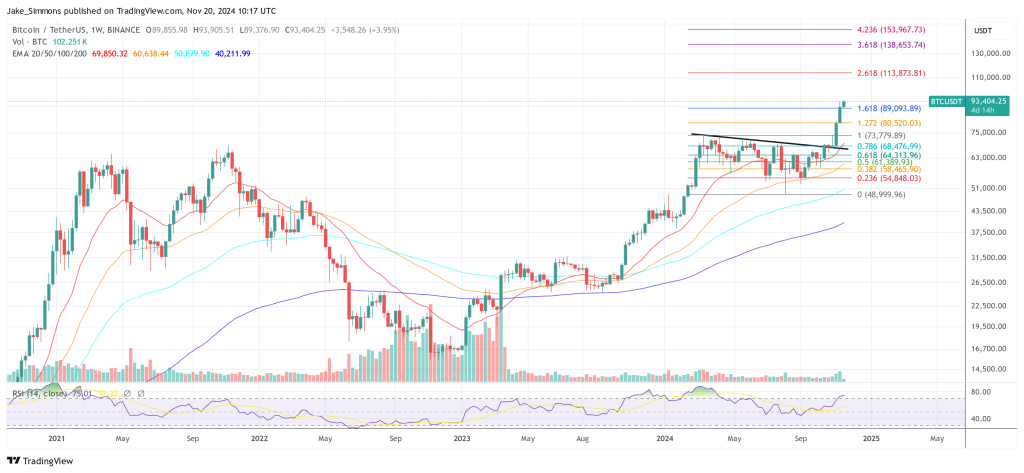At the beginning of 2021, market participants earned whopping double-digit percentage yields for providing liquidity to Decentralized Exchanges (DEX). This statistic speaks in favor of the excruciating need for a solution to the liquidity problem the cryptocurrency market has. With an exception of the most popular markets, large trades cause volatile moves in the assets’ prices. These movements often lead to the domino effect and further price increase/decrease.
Liquidity plays a key role in any stable market. The ability to open and close trades whether the party is a big investment fund, an institution, or a small-scale trader is crucial for reaching the next stages of industry’s growth.
In this article, we will explore liquidity in the cryptocurrency market, explain how it works and what impacts it can have on market participants in different circumstances.
What Is Liquidity in Crypto?
Liquidity refers to the efficiency or ease with which an asset or security can be converted into ready cash without affecting its market price.
Market liquidity refers to:
Time of transaction: how quickly you can fill orders at the prevailing price.
Depth: whether or not you can buy or sell large orders without changing the price significantly.
Spread or Tightness: the market has high tightness if you can buy and sell at a very similar price (bid-ask spread).
Resiliency: the market is resilient if any imbalances may be corrected in a short time.
Price slippage: is there a difference between the expected price of a trade and the price at which the trade is executed? Slippage can happen during periods of higher volatility. Also, it can occur in an illiquid market — when a large order is executed but the existing volume at the chosen price is not enough to maintain the current bid/ask spread.
Jump to an example to see how the price slippage works in practice.
Common Misconceptions About Liquidity in Cryptocurrency Markets
Some people mistakenly call traded volume liquidity. While two are connected (better liquidity leads to better trading conditions and higher volumes), they are not the same.
Big volumes don’t necessarily mean good liquidity. If the asset is liquid it means that the market gives a high estimation of the present value of future returns on this asset. Liquidity, in this case, reflects the readiness of the market to convert an asset back to cash at fair value.
Examples of Liquidity in Cryptocurrency Markets

An example of good liquidity:
An order book on the Buy and Sell side is nearly equal, with a slight dominance on the Sell side. It means that the asset is not overpriced.

An example of bad liquidity:
There are a lot more buyers than sellers in this case which suggests that sellers will have a hard time selling this asset. That’s bad liquidity.

Which Factors Affect Cryptocurrency Liquidity?
Liquidity in cryptocurrency markets is different from liquidity in traditional financial markets. For example, high daily trading volumes on the Apple stocks might suggest a good liquidity. Meanwhile, more factors affect crypto liquidity because of the specialties of how digital assets operate. Here’s what you need to know about these factors.
Factors affecting the market and asset liquidity:
- Prominence of cryptocurrency (why it’s unique/valuable)
- Availability on exchanges
- Activity of developers working on the network
- Level of community support
- How often this coin is used
- Regulations (level of adoption)
How Does CEX.IO Ensure a High-Quality Market (Liquidity)?

We’ve been in the game long enough to understand how important it is to ensure a high-quality market. That’s why we take a complex approach to provide good liquidity. The seamless integration of our effort on different levels formulates favorable market conditions for all participants, no matter how big or small they are.
If you want an exclusive insider peeks into CEX.IO, the points described below will give you a clear picture of our liquidity behind the scenes.
Crypto Listings
We list cryptocurrencies/pairs with high demand, increased fault tolerance, and throughput, we perform enhanced due diligence of every issuer (no shady coins with zero market activity).
Trading Conditions
We create efficient trading conditions (competitive commissions, services, and instruments) for a variety of market participants.
Regulations & Security
High regulations and security industry standards which is reflected in several Cryptocompare rankings.
Trading Volumes
Millions of customers from over 200 countries and 48 states are trading on a daily basis – fully regulated exchange attracts more customers which equals high liquidity.
Market Participants
Our markets are suitable for diverse market participants: institutionals, high-volume individuals, cash/crypto customers (retailers), arbitrages.
User Interface
User-friendly interface makes it effortless to trade on the platform, monitor an investor’s portfolio, and switch between services.
Payment Options
CEX.IO enables the usage of different payment options: cards, bank transfers, e-wallets, etc.
Ecosystem of Services
Our ecosystem of services makes it possible to interact with crypto and generate income like trading, loans, staking, savings, and funds storing. Circulation of funds in this ecosystem increases liquidity.
&
(Crypto) Maker and Taker Liquidity Explained

Traders who place limit orders – “make liquidity”. And traders placing market orders – “take liquidity”. Basically, takers fill the orders that makers place.
An order book is like an array of “if-then” conditions, ready to execute once they are met. The bigger is the array, the better is the market. It’s like if you were training a robot with a machine learning algorithm. The more information a robot would have, the smarter it would be. Same goes for cryptocurrency markets. The richer are their order books, the better they are in terms of liquidity. So, by placing limit orders, makers contribute to enriching the books.
Makers are mostly always willing to buy and sell. They are interested in turning over all types of orders (long and short) and constantly being in the market. The more frequently they trade, the more they earn from a bid-ask spread. By constant trading, they make the spread tight, which is good for takers, but makers have to trade all the time to benefit from such a market.
At the same time, who needs fancy order books if there are no people demanding them? That’s when takers come in.
Now imagine the orders being stacked in an order book. Takers need this book so that they can buy or sell immediately, anytime. When the orders from the book are filled, they cease to exist. So, continuing the analogy, the array of possible conditions becomes smaller. That’s why traders who place market orders “take” the liquidity away from the market. Takers need the liquidity provided by makers for the quick execution of their orders. In return, they are ready to accept a size of a bid-ask spread provided by makers.
A highly liquid market is where makers and takers operate in perfect balance. In other words, it’s where a high demand meets high supply and both parties are happy.
Calculating the Slippage
If your Buy order matches with the likewise Sell order of someone else, it executes immediately. This means high liquidity. However, if the exchange has low liquidity, you might encounter unfavorable price slippage. Let’s see how it works.
Example:
A trader’s order to buy 1 BTC for $40117 matches with 1 BTC-sell at $40117.
This suggests no slippage at all.
That’s good liquidity.
If the liquidity is lower, the order might be filled with a few smaller orders. In this case, the slippage may occur if the prices of the latter vary.
For example, a trader wants to SELL 1 BTC.
The order book BTC/USD of the Sell side looks like this:
0.05 – $39,963.4
0.25 – $39,938.3
0.6 – $39,935.4
0.1 – $39,911.2
So their order for 1 BTC fills with these 4 smaller orders.
The average price at which it will execute is this:
0.6*39,935.4 + 0.1*39,911.2 + 0.05*39,963.4 + 0.25*39,938.3 = $39,935.1
After this order, the price of BTC will fall to $39,935.1 because the trader took all the orders for a better price. In case if the exchange has a low liquidity there won’t be many traders who offer the better price in the nearest time.
Also, let’s calculate the slippage for this order. The best price in the order book minus the price at which the order was filled.
39,963.4 – 39,935.1 = $28.3 slippage
The prices for different orders have up to $51 variance. That’s a lot. As we can see, such a difference led to a decrease in BTC price – as soon as this order is filled, other orders in the book will start at lower than $39911.2. That means low liquidity.
Let’s see how a low variance in order prices affects the slippage and liquidity.
We have an order book (Sell side) like this:
0.6 BTC – $40,117.7
0.1 BTC – $40,117.4
0.05 BTC – $40,115.5
0.25 BTC – $40,115.7
As in the previous example, they don’t have offers for 1 BTC so the order fills the 4 smaller orders.
The price at which the trader will buy BTC will be:
0.6*40117.7 + 0.1*40117.4 + 0.05*40115.5 + 0.25*40115.7 = $40117.06
40117.7 – 40117.06 = $0.64 slippage
As a result, this order is more cost-effective than the previous one.
In other words, the best liquidity is when “what you see is what you get” in terms of price, and even if the user is trading large volumes, these volumes don’t affect the prices. That’s why a lot of market participants can benefit from their trading.
Interestingly enough, bigger orders are very unfavorable in markets with lots of smaller traders. If the exchange can’t provide users with the orders of their scale, these users might suffer losses.
Example
A trader wants to sell 0.5 BTC. The order book includes many small orders with a low price variance. The trader might think it’s good.
0.0007 BTC – $40,109.4
0.05 BTC – $40,109.4
0.005 BTC – $40,109.4
0.01 BTC – $40,109.4
0.0006 BTC – $40,104.6
0.02 BTC – $40,106.2
0.02 BTC – $40,107.5
0.05 BTC – $40,117.4
0.002 BTC – $40,115.7
0.05 BTC – $40,107.7
0.002 BTC – $40,115.5
0.001 BTC – $40,117.7
0.002 BTC – $40,117.4
0.008 BTC – $40,115.5
0.04 BTC – $40,109.4
0.02 BTC – $40,106.2
0.05 BTC – $40,104.6
0.003 BTC – $40,110.7
0.04 BTC – $40,111.4
0.002 BTC – $40,115.7
0.05 BTC – $40,116.6
0.05 BTC – $40,115.5
0.003 BTC – $40,115.7
But if we calculate the average price of BTC for this order like in the above examples (if it fills with all these smaller orders), here’s what we get:
0.5 BTC = $23,970.66
So, the price slippage is…
40,117.7/2 – 23,970.66 = – $3,911.81
That often happens on DEX (decentralized exchanges) which are not regulated. In turn, regulated exchanges like CEX.IO have multiple sources of liquidity to ensure the most favorable trading conditions for all participants, regardless of the volume.
Why Do We Need Good Liquidity In Crypto Markets?

For both big and small traders, it is absolutely necessary to find a source of good liquidity to make favorable trades. The ability to quickly convert assets without compromising on their fair prices is pivotal to any exchange. That’s why CEX.IO puts so much effort into maintaining a high liquidity.
High volatility naturally attracts traders and investors in the first place. Yet, without liquidity, traders wouldn’t be able to make use of the market opportunities.
Why Bad Crypto Liquidity is Bad:
🚫 Bad Liquidity Makes the Strategies Useless
Obviously, all traders want to make favorable trades. Bad liquidity is too unpredictable to make any reference points, perform analysis, or plan in advance because you never know how it turns out.
&
🚫 Whales Can Crash the Market
In the markets with bad liquidity, it’s a common scenario. A big order comes and takes away a big chunk of the order book. That’s when the least favorable price becomes available to traders and usually, it differs a lot from the price that was on the chart before this large order executed. Illiquid markets might be vulnerable to large-volume individuals or entities that are interested in manipulating the market this way to get the significant returns at the expense of other market participants.
&
🚫 Orders Get Stuck
When traders place a limit order and don’t have a matching order from the other side, it won’t execute. As a result, this order just hangs there in the order book until eventually it might become not favorable at all.
&
🚫 Slippage Occurs
When the liquidity is bad, the order might execute not at the price that the trader sees on the chart. That’s because other orders take away better prices. If the amount of buyers and sellers on both sides were enough, everyone would have a chance to get fair prices.
Why Good Crypto Liquidity is Good:
✅ Good Liquidity Equals Easy and Quick On/off-Ramp
In an exchange with good liquidity, you can buy or sell crypto for fiat anytime. You’ll convert the amount quickly and you won’t lose money on the exchange rates.
&
✅ With Good Liquidity, You Can Trade Efficiently
Efficient trading suggests that you quickly react to market fluctuations and that your moves bring you the expected returns. Liquid markets also make lots of opportunities to take advantage of the price movements. Illiquid market means that no one is trading this asset, so there’s no point in entering it.
&
✅ Traders Get Fair Prices and Stable Markets
When there are lots of buyers and sellers in the markets, both get what they want. Sellers can sell at high prices and buyers can buy at competitive prices, too. Plus, anytime they want to perform trades, the prices reflect the value of the asset at that particular time. A large amount of various volumes being traded back and forth also makes for stable markets. Big volumes neither get stuck nor crash the market. Meanwhile, there is always an ability to perform small trades.
&
✅ Enhanced Accuracy for Technical Analysis
Technical analysis is the study in which traders analyze patterns and tendencies of the price chart to make predictions about the movement of prices in the future. To perform an accurate technical analysis, traders need a precise chart of the currency pair price movements.
What Traders Get With Bad and Good Liquidity
What they WANT: Fill big or small orders at the best possible prices. | |
What they GET | |
| Good Liquidity | Bad Liquidity |
|
|
The External Risks of Crypto Markets and What Liquidity Has To Do With It
Studies show that liquidity risks can generate drastic ups and downs in cryptocurrency prices even in the absence of speculative bubbles. Good liquidity protects investors and traders against those risks.
Researchers illustrate extreme price swings by fat tails in a bell-shaped curve which shows the probability of an expected price outcome.
Let’s take Bitcoin. The less liquidity it has, the further away it is from the normal distribution (with a real-valued random variable). It means that price jumps become more drastic and unexpected.

For non-geek people out there, the tall bell-shaped distribution with a high peak, skinny middle, and fat tails mean one thing.
On one side, there’s a likelihood of fantastic returns. On the other side, there are sudden losses. It’s hard to predict the specific time of a certain event, yet it’s going to happen 100%.

This kind of distribution also suggests that dramatic boom-bust episodes usually won’t have a long-term destabilizing effect on the market. In practice, Bitcoin price history includes up to 40% up or down swing in a day, which is 8 standard deviations away from the average. After corrections like these, the price quickly stabilizes. But in a short-term perspective, traders are exposed to great risk if the liquidity is bad during the rally.
Good liquidity is a secret to reducing the risks in a market like BTC/USD where the level of financial risk is extreme.
Good liquidity improves the market quality when:
- Asset value changes every second
- Irregular buy and sell patterns are observed
- Unfavorable market circumstances occur
How to Define Market Quality with the Help of Liquidity?

Good market quality is when orders are filled as quickly and cost-effectively as possible.
Analyzing liquidity becomes crucial in defining the market attractiveness for the investors. Today’s cryptocurrency markets are fragmented, meaning that on different exchanges traders get access to different liquidity pools instead of one market for all, like a stock exchange. Also, these markets utilize an algorithmic trading model. So it’s fair to suggest that when analyzing market quality, traders should refer to the new rules that are inherent to these specific markets.
Checklist: How to Define a Market Quality in Crypto Markets
In other words, how to understand that the market is liquid?
Liquidity is like a puzzle – it consists of many parts that work together as a whole.
High liquidity = high market quality.
Below is a quick checklist of liquidity building blocks that also make a good market quality precisely in crypto markets. If these values look good, most likely, you’re looking at a highly liquid asset.
&
☑️ Bid/Ask Spread
The tighter the spread, the better. Small difference between the bid and ask price reduces the cost of a trade for a trader. Tight spreads usually indicate markets with high liquidity and low volatility. Conversely, wide spreads might appear in the markets with low liquidity and high volatility. Sometimes traders use the term “market breadth” which in crypto generally refers to the number of buyers versus the number of sellers. A broad market allows for a tight spread.
&
☑️ Market Depth
Deep order books are another sign of lucrative markets. Traders want to look not only for a big amount of pending orders but also for their constant flow. It looks like a rapid update of the order book – orders continuously come and go, like an ocean tide. And, as we learned from the example above, good order books are full of all kinds of order sizes.
&
☑️ 24h Trading Volume
High 24-hour trading volumes show how much money is turning over daily. It’s the sum of all the orders made for a day. So, unless the market gets dominated by one or few large-volume traders, high daily trading volume implies good liquidity. Because the more orders are being filled during the day – the better is the liquidity.
&
☑️ Market Resilience
Resilient markets are the ones that quickly get back to mean or average fair value of the asset after a sudden price swing. While crypto markets are fragmented, they are still extremely sensitive to major news about cryptocurrencies. Highly liquid markets don’t take much time to recover after a price jump caused by another breaking news about Bitcoin or any other crypto.
&
☑️ Execution Time
Refers to how quickly orders are executed. Highly qualitative markets are able to deal with a high tide of orders constantly coming in and being filled within the shortest time frame.
How to Define Market Liquidity? A Practical Example
Now that we know the theory, let’s practice it!
Let’s define the market quality by looking at the CEX.IO platform.
&
Using Liquidity In Practice: Beginner’s Guide
Here is where you can find the 24h trading volume:

Bid/Ask spread is easy to monitor in our mobile app:

You will find the order book right below the price chart:

Click on the asset in the order book and drag down to select the amount you want to buy. Under the book, you will see a message showing the price at which you would buy the selected amount. In this case, you would buy BTC for $47,343 while the best current price is $47,402.

Also, by looking at the trading history, you can assess how big or small orders affect the further price. As you can see in an example below, bigger orders don’t have a significant impact on the later price of the asset.

Using Liquidity In Practice: Medium to Advanced Traders
Let’s say you’re looking for arbitrage opportunities.
Let’s go to Coinpaprika and explore markets for Ethereum.
As an arbitrageur, you want to pick at least two exchanges, in order to buy the asset at one of them and sell it at another. For example, you are viewing the Exchange #1 and Exchange #2, which are described below, as your possible pair for arbitrage.
- Exchange #1
CEX.IO has a $40.7 million volume on the pair ETH/USD with an ETH price of $3,072.

2. Exchange #2
Then, there’s another exchange, let’s call it Exchange N. Here, the price for this pair is slightly higher than at CEX.IO and it’s $3,079. So it looks like quite a good pair for arbitrage at the first glance. However, the daily trading volume is much lower than at CEX.IO – and it’s less than $1 million.

To understand how volume relates to price, let’s also look at the third example.
Let’s look at an Exchange X to understand the price range and determine the price that is associated with rather good liquidity.

Here, the daily trading volume is more than $1 billion and the price is closer to the one that CEX.IO has – $3,071. That’s how we understand that this price reflects the asset’s value at the moment.
Clearly, buying at CEX.IO and selling at an Exchange N, in this case, isn’t a very good idea. The higher price at an Exchange N might suggest that there’s an insufficient amount of trading activity and orders get stuck in an order book. A higher price might simply mean that orders don’t execute that often to keep the price within average numbers. This is an example of bad liquidity.
Conclusion
The crypto markets are maturing, and one of the results is higher liquidity and stability. Nowadays, large volumes can be traded without a significant impact on prices in the majority of cases.
Still, understanding the exact impact of liquidity on trading and choosing a strategy that takes this factor into account is key. With an influx of institutional capital, we can expect to see an increase in the liquidity of the leading markets, as well as higher trust that will in turn attract those seeking new opportunities in the crypto industry.
What’s your story? Has liquidity ever been an issue for you? Join us and share your experience on social media. And if you are looking for a safe place with prime liquidity, come and trade at CEX.IO. We’re solid and you know it.

You can get bonuses upto $100 FREE BONUS when you:
💰 Install these recommended apps:
💲 SocialGood - 100% Crypto Back on Everyday Shopping
💲 xPortal - The DeFi For The Next Billion
💲 CryptoTab Browser - Lightweight, fast, and ready to mine!
💰 Register on these recommended exchanges:
🟡 Binance🟡 Bitfinex🟡 Bitmart🟡 Bittrex🟡 Bitget
🟡 CoinEx🟡 Crypto.com🟡 Gate.io🟡 Huobi🟡 Kucoin.


















Comments